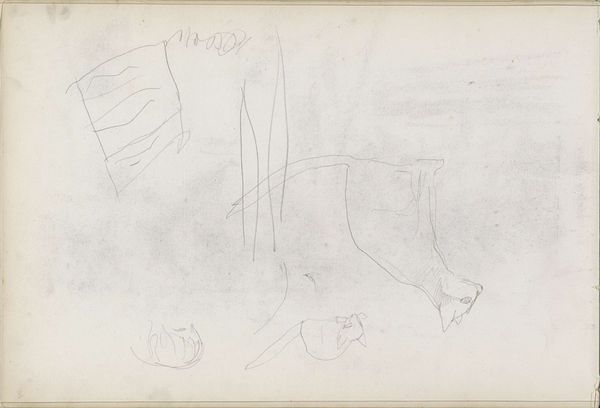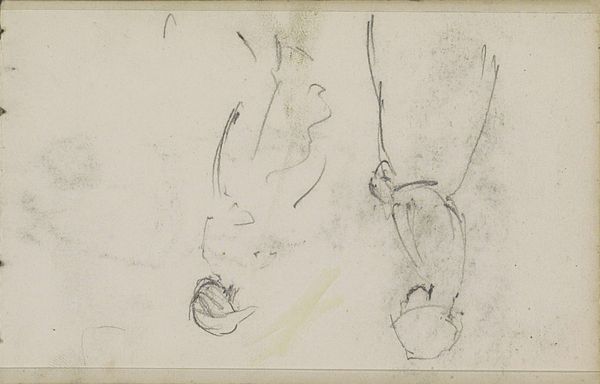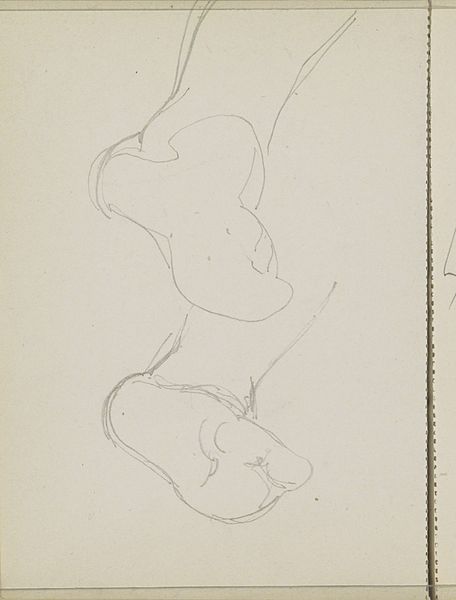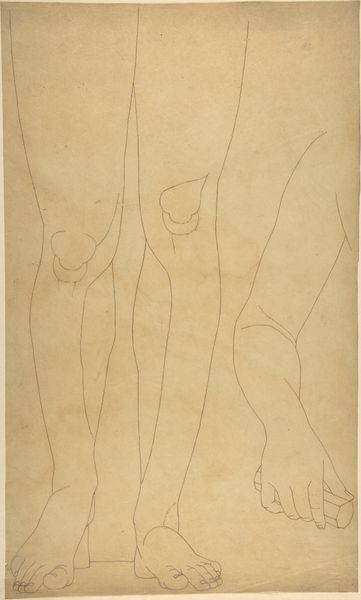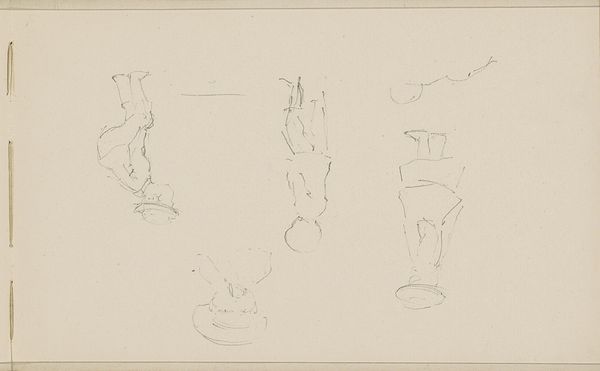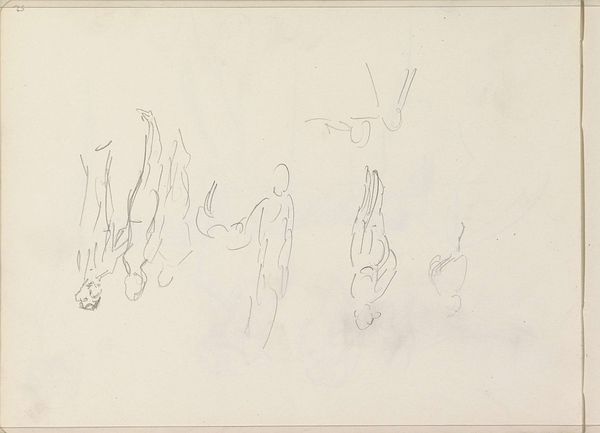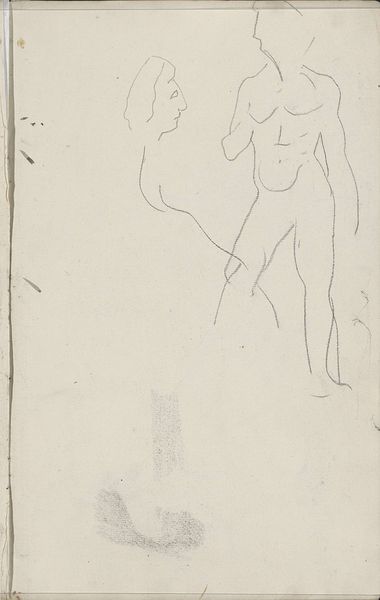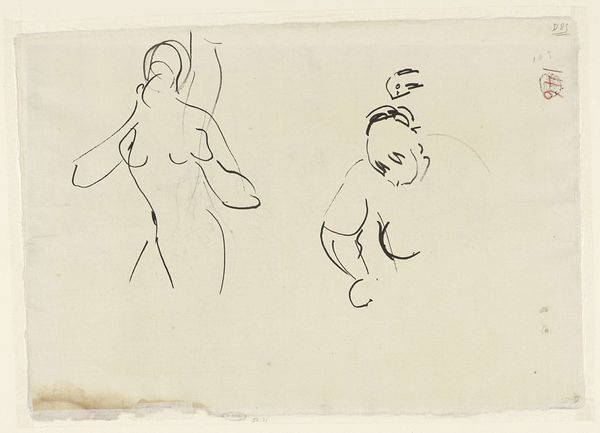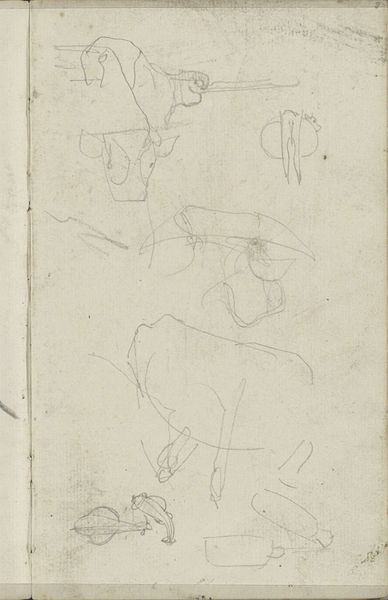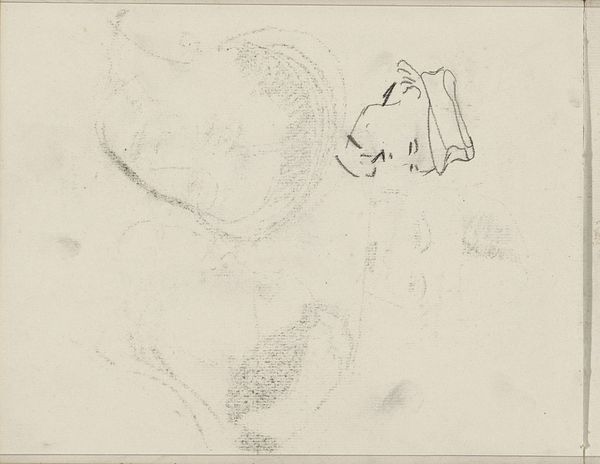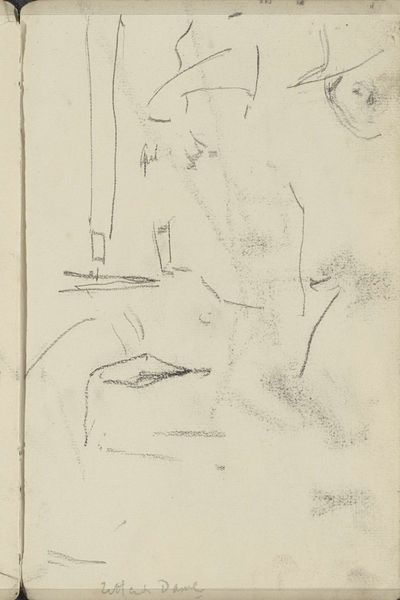
Studieblad, onder andere met een gezicht, arm en kledingstukken 1896
0:00
0:00
careladolphlioncachet
Rijksmuseum
drawing, paper, pencil
#
portrait
#
drawing
#
amateur sketch
#
imaginative character sketch
#
face
#
figuration
#
paper
#
personal sketchbook
#
idea generation sketch
#
sketchwork
#
character sketch
#
pencil
#
line
#
sketchbook drawing
#
storyboard and sketchbook work
#
sketchbook art
#
arm
#
initial sketch
Copyright: Rijks Museum: Open Domain
Editor: This is a study sheet from 1896 by Carel Adolph Lion Cachet, done in pencil on paper. It’s called “Studieblad, onder andere met een gezicht, arm en kledingstukken” and it’s currently at the Rijksmuseum. There’s something so immediate about seeing an artist’s process laid bare like this. What’s most interesting to you about this work? Curator: What strikes me is how this simple sketch page offers a window into the artistic milieu of the late 19th century. Cachet was working during a time of massive social and political upheaval. Consider the context of artistic training and academic traditions of the period. Do you notice how the seemingly random arrangement of studies—a face, an arm, some fabric—mirrors a particular approach to art education? Editor: I guess I do, now that you mention it. I can imagine a teacher asking students to practice certain elements over and over. Was this kind of sketch intended for public view, or was it purely for the artist's own use? Curator: That’s an important distinction to consider. Sketches like these weren’t usually intended for exhibition, but rather served as a crucial stage in the development of more finished pieces. How might seeing this ‘behind the scenes’ peek at his process influence how we value or understand his final artworks? It provides insights to the role and labor involved. Editor: So, it’s almost like a historical document of artistic practice in addition to just being a drawing? That's a cool perspective. Curator: Precisely! It reveals the ways artistic skills were honed and how visual ideas took shape within specific institutional frameworks. Editor: I'll definitely think about sketches differently now, considering the social context and the artist’s training. Thank you. Curator: And I think engaging with "minor" works like these can enrich how we look at any art; a reminder of the value of process.
Comments
No comments
Be the first to comment and join the conversation on the ultimate creative platform.
